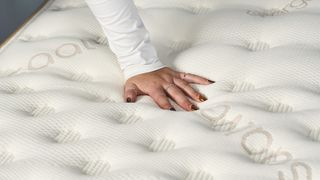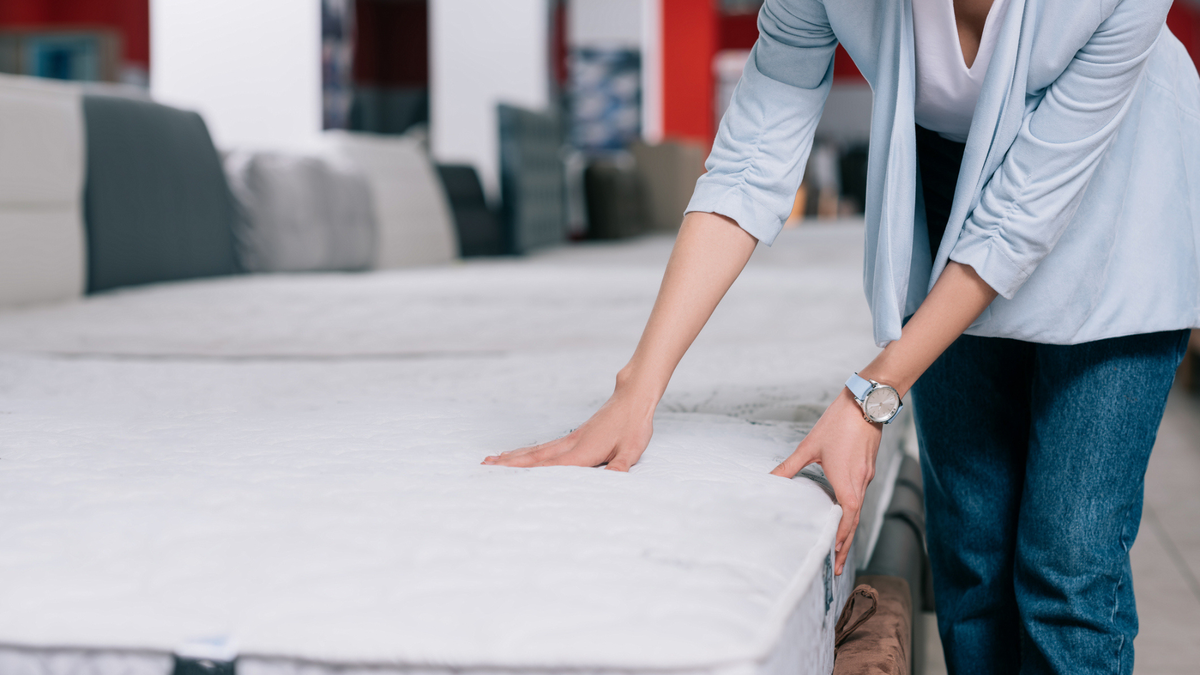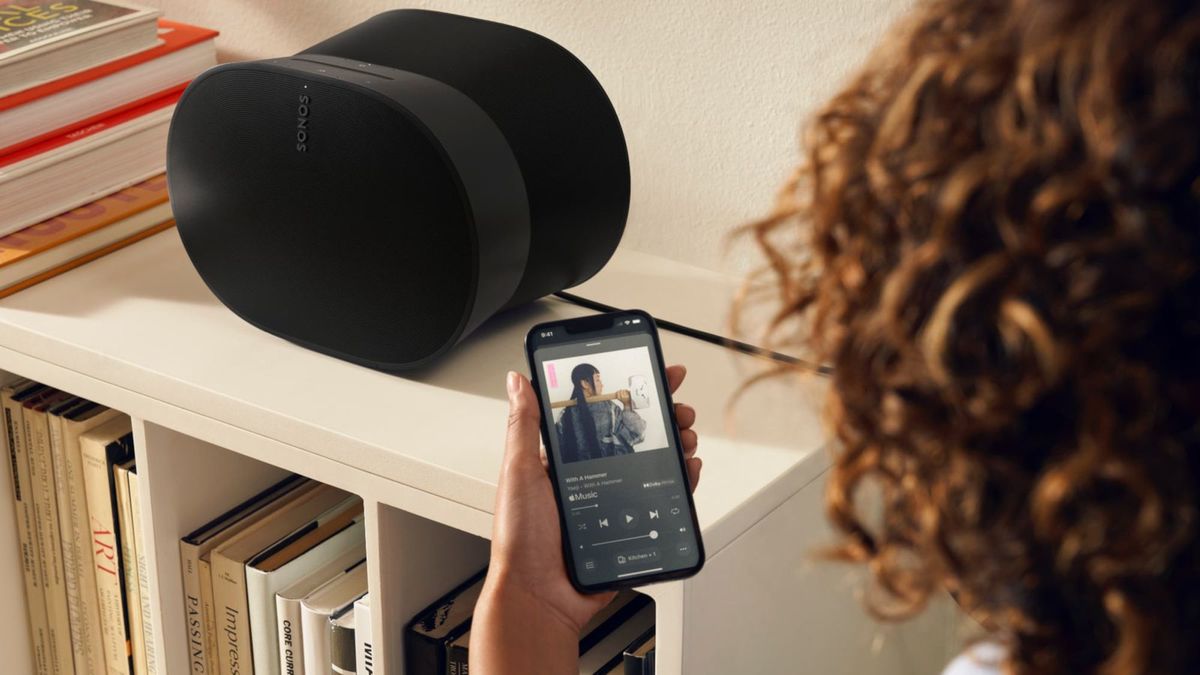At Tom's Guide, we always recommend that you spend what you can afford on a new mattress — especially if you experience back pain. But while a quality mattress is a worthwhile investment, that doesn't mean that you can't pick up a decent mattress on a smaller budget. You just need to know what to look for.
Our guide to the year's best mattresses contain options for all sleep needs and budgets. However, there are plenty of cheap mattresses out there that don’t offer adequate spinal support. The below guide on how to choose a budget mattress for back pain will help to point you in the right direction.
The Presidents’ Day mattress sales are just around the corner, giving sleepers even more scope to pick up a good mattress at a discounted price. But for now, here’s what to look for in a budget mattress for back pain...
How much does a budget mattress cost?
Everyone will have a different idea of what 'budget' means, but at Tom’s Guide, we’d suggest that the best affordable mattresses is one that costs under $500 for a queen.
Budget mattresses, in general, use less expensive materials and production methods to keep the price down, while mattresses that are specifically designed for back pain are specialist options, and often come with higher price tags. A budget mattress that still alleviates back pain might be tricky to find for $500 or less, so if you can stretch your budget a little, you’ll be rewarded with more choice, since several of the best mattresses for back pain retail for just over $650.
How to choose a budget mattress for back pain — 5 pro tips
Even if you’re on a budget, there are still some key features you should look for in a mattress if you want it to help ease back pain.
1. Lumbar support
The best mattresses for back pain will provide excellent lumbar support. But why is lumbar support important when it comes to preventing back pain? Your lumbar region is the five large vertebrae in your lower back, spanning your ribcage to your pelvis. A mattress with good lumbar support will help to maintain neutral spinal alignment, filling any gap between your lower back and the surface.
More expensive mattress options often have enhanced lumbar support, with specialist quilting, foams or reinforced coils in the centre third of the mattress. However, you’re not going to find these in budget mattresses. Instead, look for mattresses that have firmer foams or a coil layer to provide support for your lumbar region.
2. Sleeping position

Regardless of how big your budget, you should always shop for a mattress with your dominant sleep position in mind. In our guide to how to choose a mattress for your sleep position, we explain that (as a rule of thumb), lightweight and side sleepers should opt for a medium to medium-firm mattress with plenty of plush pressure relief across the shoulders, hips and knees. Meanwhile, back, stomach and heavier people should opt for a mattress on the firmer side of medium-firm to support the spine.
While there are
recommended sleeping positionsfor those experiencing back pain, it can be hard to change the position that feels most comfortable to you. So we'd always suggest working with your preferred sleeping style when it comes to choosing a mattress to help with back pain.
3. Mattress firmness
For those who experience back pain, a bed that maintains neutral spinal alignment is key. Mattress firmness is subjective, but those with back pain will need a mixture of support for their back along with cushioning for pressure points. For most sleepers with back pain, one of the best medium-firm mattresses is the ideal choice, as it will offer the ideal combination of support and comfort. However, those with lower back pain may find that one of the best firm mattresses will be better, as they will need even firmer support in the lumbar region.
4. Pressure relief
When you lie in bed, you’ll probably notice that some parts of your body come into contact with the mattress more than others. This creates pressure points, most commonly around the hips, knees, shoulders and lumbar region (though depend on your sleeping position). When a mattress supports and cushions these pressure points, it provides pressure relief.
Everyone needs pressure relief in a mattress, but it’s particularly important if you suffer with aches and pains, including back pain. This is because a lack of pressure relief is often the cause of your back pain in the first place. The amount of pressure relief varies according to your sleeping position. Side sleepers need a thicker layer of cushioning to provide pressure relief along the shoulders and hips, while back sleepers need to support their lumbar region. Stomach sleepers will need a firmer mattress that provides pressure relief around the hips, whilst still keeping them supported and lifted for spinal alignment.
5. Temperature regulation

People are often surprised to hear that overheating at night can exacerbate and even cause back pain. But it’s actually fairly logical – overheating at night causes restless sleep. As we toss and turn, throwing covers on and off to try to get comfortable, our spines are constantly moving. Fidgeting at night means that your body won’t benefit from lumbar support or pressure relief that’s being provided by the mattress.
Many of the best cooling mattresses come with high price tags, as they use specialist cooling materials. However, there are some budget options available, such as the Cocoon by Sealy Chill mattress (down from $1,079 to $699 for a queen thanks to a permanent 35% off mattress sale), which is also one of our recommended mattresses for back pain.
How to boost the support of your existing mattress
If you're not in a position to replace your mattress just yet, there are other (cheaper) tweaks that can be made to help ease back pain on your existing bed.
Boost support with a mattress topper
A mattress topper is like a mini mattress. Sitting on top of your existing mattress, it alters the feel of your sleep surface. For those with back pain, adding a topper can make a huge difference. Generally, you’ll want to choose a firm topper to help with a too soft surface that isn’t providing adequate lumbar support, but on the flip side, a softer topper can help if your mattress is too firm and not providing adequate relief for pressure points. It doesn’t have to be expensive either – our guide to the best cheap mattress toppers will help you pick one up for under $50.
Place a small pillow under or between your knees
Never underestimate the power of a pillow when it comes to easing back pain. As mentioned above, it’s recommended that those with back pain sleep on their sides with a small pillow between the knees. But a pillow can still help back sleepers as well – place the pillow under your knees to help relax the back and encourage alignment.
It really isn’t recommended to sleep on your front if you have back pain but if you must maintain this position, use a pillow under your hips to keep them lifted and relieve pressure. Whilst a normal pillow can work perfectly well, you may find a specific wedge or knee pillow easier to keep in position through the night.
Choose the right pillow for your sleeping position
Sleeping on the wrong pillow can cause neck and shoulder pain, but it will also throw your spine out of its natural alignment. You need to pick the best pillow to keep your spine aligned in your chosen sleeping position. As with mattresses, personal preferences play a part here, but in general side sleepers need a firm, reasonably lofty pillow, while back sleepers will get on better with a medium firm pillow with a lower loft. Stomach sleepers often fare best without a pillow at all or, if they do use one, a very low, soft pillow. We’re also fans of adjustable loft pillows, where you can add or remove fill for your exact specifications.
Add a bunkie board or plywood
As a temporary measure, you can firm up an older, soft mattress by placing a bunkie board or a layer of plywood between it and the bed base. Bunkie boards are flat boards, made from plywood or particleboard of between one to three inches thick and, unlike a basic piece of plywood, are usually covered in fabric to prevent snagging and protect your mattress.
The advantage of a bunkie board or plywood is that it will immediately provide a firmer surface for your mattress to sit on, which will then help to provide more support to your back. However, some mattresses (such as memory foam) need ventilated space underneath to breathe, so this solution won’t work as it could cause mildew and mould to build up.





















 English (US) ·
English (US) ·